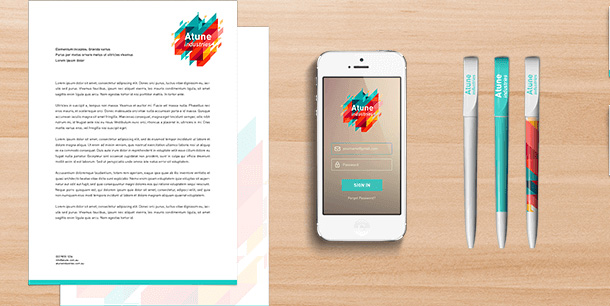 Branding is a key aspect of any business large or small, so if you’re setting up a small business then it’s important to know what this essential business term means and how you can effectively brand your new company. In this article, we walk you through the steps to effectively build a brand.
Branding is a key aspect of any business large or small, so if you’re setting up a small business then it’s important to know what this essential business term means and how you can effectively brand your new company. In this article, we walk you through the steps to effectively build a brand.
1. Define your brand
The first step to branding your business is to define exactly what your brand stands for. Think about the products or services your business offers and determine your target audience to help you define:
- Your company’s mission statement
- Features and benefits of your products or service
- What customers and prospects think about your business (conduct research)
- What qualities you want people to associate with your brand and business
- Your competitive advantage and what exactly differentiates you in the market
2. Establish your brand personality
Think about what is driving your business to help inform the business identity and character for your brand. Think about your brand as a person to help:
- Clearly define your beliefs, values and purpose
- Establish your brand characteristics i.e. playful or serious, loud or quiet, feminine or masculine?
- Create your brand voice i.e. conversational or serious, friendly or formal
- Define the type of visuals that will effectively represent your brand
3. Develop key branding assets
A great business logo is the foundation of your brand so it’s important to get it right. Work with a professional designer to develop a strong visual identity for your business including a logo design and colour scheme for your branding that makes your business instantly recognisable to customers and prospects. From your business card to billboard through to a smartphone screen, it’s also important that your logo works at whatever size it needs to be and wherever it’s going to be seen. Once you’ve established your company logo then develop a whole set of branding assets, including
- Business cards
- Business stationery (company letterhead, envelopes etc)
- Marketing materials (flyers, brochures, catalogues)
- Packaging
- Large format signage
- Emails and EDMs
4. Have an online presence
These days you need to maximise your brand’s online presence to help set your business apart from the competition and expand your target audience reach. The first step is to create a website and working with a professional such as Kwik Kopy to develop and design your site will ensure it accurately reflects your brand. Once your website is created then it’s time to optimise your online presence by:
- Starting social media profiles by choosing the platforms that work best for your business (i.e. Facebook to interact with your local community, Instagram for something more visual or LinkedIn for business)
- Creating great content such as blogs to help increase your search engine rankings for your business website or video such as YouTube to engage your audience and direct traffic back to your site
- Showcasing the quality of your business and brand by including customer testimonials, company awards, community involvement etc
- Monitoring your brand’s reputation and be ready to respond
5. Be consistent
Branding is all about consistency and producing an effective message to help raise awareness and one of the key benefits of working with a professional graphic designer on your business branding is that they can help create a style guide for your company to help everyone who represents your brand to be consistent in the use of your branding at all times. A set of brand standards and style guide will ensure the same look and feel at all times, including:
- Same colour scheme and logo placement
- Properly branded design templates
- Speaking to customers with a consistent tone of voice
Finally, remember that branding extends to each and every aspect of your business so you need to integrate your brand in everything you do. From your email signature, to face-to-face communication to how you answer your phone. Make sure your team understands your brand attributes and what you want to communicate to your targets.
At the end of the day, if you want to build a brand and ongoing customer loyalty, it’s important to deliver on your brand promise and be true to your brand at all times.






